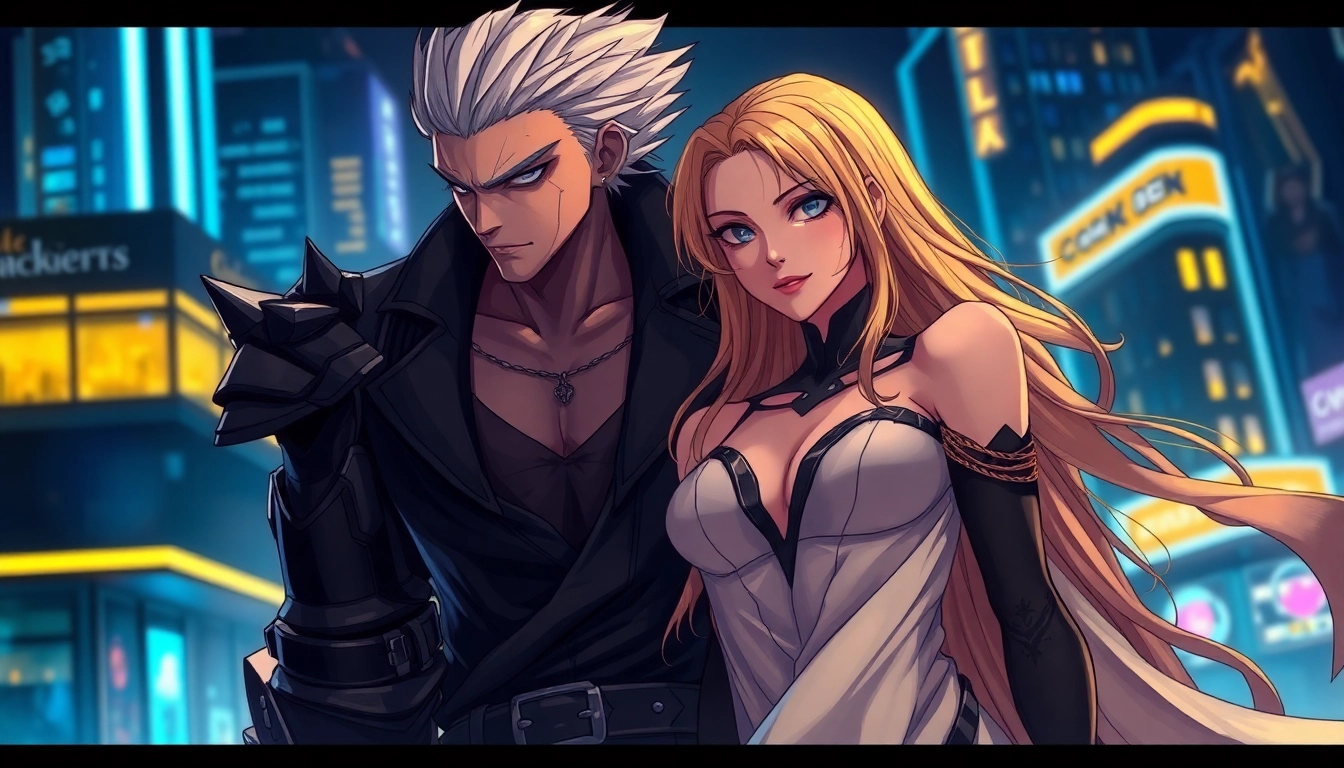
Unveiling the Mysteries of Omegaverse: What Is Omegaverse and Why It Captivates Fans
The world of fan fiction and niche literary genres is ever-expanding, offering readers and creators alike a vast landscape of imaginative worlds to explore. Among these, omegaverse stands out as a particularly intriguing subgenre that has gained significant popularity across various communities. Originating within the realm of fan fiction, especially within the contexts of popular media like *Supernatural*, *Supergirl*, and *Teen Wolf*, the Omegaverse introduces a complex social and biological universe where characters are categorized into distinct roles—Alphas, Betas, and Omegas—each with their own traits, behaviors, and societal significance.
Understanding the Origins and Evolution of Omegaverse
The Birth of Omegaverse in Fan Fiction Culture
The origins of the Omegaverse can be traced back to the early 2010s within fan fiction communities, particularly on platforms like LiveJournal, Archive of Our Own , and FanFiction.net. It emerged as a subgenre that provided a framework for exploring complex interpersonal dynamics, power structures, and societal norms through a biological lens. The concept was initially a way for fans to reimagine their favorite characters with heightened biological traits that influence their behavior, social standing, and relationships.
Biological and Social Foundations of Omegaverse
The core idea behind the Omegaverse revolves around a hierarchical system based on gender roles that are rooted in biological features. These features include pheromones, mating instincts, and reproductive capacities, which are often exaggerated for dramatic and narrative purposes. This biological underpinning allows for a wide range of storytelling possibilities, from romantic and sexual encounters to political intrigue and societal critique.
Key Concepts and Themes in Omegaverse
Roles and Hierarchies: Alpha, Beta, and Omega
The most defining aspect of the Omegaverse is the classification of characters into three primary roles:
- Alphas: Often depicted as dominant, strong, and assertive, Alphas possess heightened pheromones and physical attributes that signify authority and strength. They are typically portrayed as natural leaders, protectors, or aggressive figures in stories. Their biological traits often include a more pronounced scent, increased musculature, and a heightened sense of dominance.
- Betas: Representing the middle ground, Betas are usually portrayed as balanced and neutral in terms of biological traits. They are seen as adaptable, often acting as mediators within the social hierarchy. In stories, Betas may serve as the backbone of society or the most relatable characters, embodying stability and normalcy.
- Omegas: Characterized by their nurturing, submissive, or vulnerable traits, Omegas often possess biological features that include pheromones signaling receptivity or fertility. They are frequently depicted as emotional, sensitive, and sometimes vulnerable, but also capable of resilience and strength. The portrayal of Omegas often explores themes of protection, societal roles, and personal agency.
The Dynamics of Mating and Reproduction
Another central theme in the Omegaverse is the focus on mating behaviors and reproductive biology. Pheromones play a significant role, influencing attraction and social interactions. The concept of “heat” or “rut” cycles is commonly used to depict periods of heightened fertility and sexual receptivity, adding layers of tension and urgency to narrative arcs.
Societal Structures and Power Play
The hierarchical nature of the Omegaverse allows authors to explore complex power dynamics, gender roles, and societal expectations. Stories often delve into themes of dominance and submission, societal discrimination, and personal identity. These themes resonate with readers who enjoy nuanced explorations of authority, vulnerability, and societal norms.
Popular Themes and Tropes in Omegaverse Stories
Fated Mates and Soulmarks
Fated mates are a recurring motif, where characters are destined to be together based on biological or mystical signs, such as a “soulmark.” This trope amplifies the intensity of romantic connections and often leads to dramatic conflicts or heartfelt reunions. The concept of soulmarks or matching pheromones underscores the biological foundation of the Omegaverse, making relationships feel predestined and profound.
Heat Cycles and Reproductive Pressures
The recurring theme of heat cycles introduces elements of urgency and vulnerability. Omega characters, in particular, may experience uncontrollable biological urges, compelling stories centered around protection, consent, and emotional connection. The depiction of heat cycles allows for a mix of sensuality, tension, and vulnerability, making it a popular narrative device.
Power Dynamics and Consent
Given the hierarchical nature of the universe, many stories examine themes of consent, power imbalances, and agency. Some narratives explore the struggles of characters who challenge societal norms or seek to redefine their roles, fostering conversations around autonomy and equality within a fantastical biological framework.
Omegaverse in Media and Literature
Representation in Fan Works and Original Fiction
While primarily rooted in fan fiction, the reach of the Omegaverse has expanded into original works and published novels. Authors have begun to develop standalone stories, webcomics, and even serialized novels that explore Omegaverse themes beyond fandom. The genre’s flexibility allows creators to adapt its core concepts into various narrative styles, from romantic drama to dystopian allegory.
Influence on Mainstream Media
Although still a niche genre, some elements of the Omegaverse have permeated mainstream media, especially within LGBTQ+ narratives and speculative fiction. The genre’s emphasis on diverse gender roles and societal structures aligns with contemporary discussions on gender identity and fluidity, making it a compelling lens for storytelling.
Controversies and Criticisms Surrounding Omegaverse
Ethical Concerns and Representation
The depiction of biological determinism and hierarchical roles has sparked debate within fan communities. Critics argue that some stories reinforce stereotypes or depict non-consensual scenarios that can be problematic. Discussions around consent, agency, and respectful representation are vital when creating Omegaverse stories, especially considering the genre’s sometimes explicit content.
Potential for Misuse and Harmful Tropes
Given its focus on power dynamics and biological imperatives, the Omegaverse can sometimes be misused to romanticize unhealthy relationships or normalize coercive behaviors. Responsible storytelling and awareness of these issues are essential for creators and audiences alike.
Creating Your Own Omegaverse Characters: Tips and Best Practices
Understanding the Core Traits and Backstories
When designing Omegaverse characters, it’s crucial to develop detailed personalities, backgrounds, and biological traits that align with the roles of Alpha, Beta, or Omega. Consider how their societal roles influence their worldview, relationships, and internal conflicts. Providing rich backstories enhances character depth and makes stories more engaging.
Balancing Biological Traits with Personal Agency
While biology plays a significant role, well-crafted stories ensure characters retain agency and depth beyond their biological functions. Avoid reducing characters solely to their roles; instead, explore their personal growth, desires, and struggles within the societal framework.
Incorporating Themes of Consent and Power
Given the sensitive nature of some themes, it’s vital to handle scenes involving power imbalances, heat cycles, and intimacy with care and responsibility. Promoting consent and mutual respect can elevate your storytelling and resonate better with diverse audiences.
The Future of Omegaverse in Creative Communities
Expanding Diversity and Representation
As the genre continues to evolve, there’s a growing emphasis on diverse representation, including non-binary characters, different cultural backgrounds, and unconventional relationship dynamics. This expansion fosters more inclusive storytelling and allows a broader range of readers to see themselves reflected in Omegaverse worlds.
Integration with AI and Technology
Platforms like CrushOn AI are revolutionizing how creators develop and interact with Omegaverse characters. By enabling users to craft customizable AI characters with distinctive personalities, backstories, and memory systems, these tools facilitate immersive storytelling experiences. The use of advanced language models such as GPT-4o mini and Claude 3.5 Sonnet ensures natural, engaging interactions, making it easier than ever to explore Omegaverse themes through dynamic roleplay or narrative development.
Interactive Storytelling and Community Building
With cross-device accessibility and group chat features, platforms are fostering a vibrant community of fans and creators. They serve as collaborative spaces where enthusiasts can share stories, develop characters, and participate in roleplay scenarios that bring the complexities of the Omegaverse to life. As technology advances, expect more interactive and personalized experiences that deepen engagement and creative expression.
Conclusion: Why Omegaverse Continues to Fascinate
The Omegaverse remains a captivating genre because it blends biological intrigue with social complexity, allowing for rich storytelling that explores the depths of human relationships. Its flexibility enables it to serve as a mirror for societal issues, a playground for fantasy, or a space for exploring personal identity. Whether through traditional fan fiction or cutting-edge AI-powered platforms like CrushOn AI, the genre’s appeal endures, inviting new generations of writers and fans to imagine worlds where biology, society, and emotion intertwine in endlessly fascinating ways.
To fully grasp the essence of this dynamic genre, one might ask, What is Omegaverse and why does it continue to captivate so many? The answer lies in its ability to merge biological storytelling with social commentary, creating a universe that is as compelling as it is complex, ensuring its place in the landscape of modern speculative fiction for years to come.



